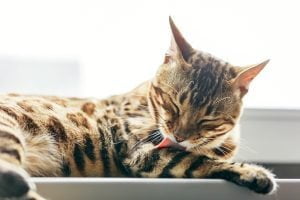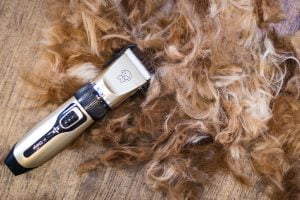
Breed-Specific Grooming: Customized Techniques for Grooming Different Dog Breeds

Introduction
Grooming plays a vital role in maintaining the health and appearance of dogs. However, different breeds have distinct grooming requirements based on their coat type, length, and texture. Understanding breed-specific grooming techniques is essential for ensuring your dog's coat remains healthy and well-maintained. In this comprehensive guide, we will explore breed-specific grooming requirements and techniques, taking into account various factors that influence grooming needs. Gain valuable insights from The Rich Groomer to provide tailored care for your beloved canine companion.
Importance of Breed-Specific Grooming
Breed-specific grooming is essential for maintaining the health and aesthetics of a dog's coat. Here's why it matters:
Coat Health and Maintenance:
Breed-specific grooming practices address the unique needs of different coats, promoting overall coat health. Proper grooming techniques help prevent matting, tangling, and skin issues that may arise from neglect or improper care.
Aesthetic Appeal:
Different breeds have specific coat characteristics that contribute to their unique appearance. Breed-specific grooming techniques enhance the aesthetic appeal of each breed, showcasing their distinctive coat qualities and highlighting breed standards.
Comfort and Well-being:
Regular and appropriate grooming techniques ensure your dog's comfort and well-being. Keeping their coat clean, free from mats, and properly maintained contributes to their overall happiness and reduces the risk of skin irritations or infections
Grooming Techniques for Different Coat Types
Explore breed-specific grooming techniques based on different coat types:
Short Coats:
Breeds with short coats, like Beagles or Boxers, require less maintenance compared to longer-haired breeds. Focus on regular brushing with a bristle brush to remove loose hair and distribute natural oils. Occasional bathing helps keep the coat clean and healthy.
Medium Coats:
Breeds with medium coats, such as Cocker Spaniels or Bulldogs, benefit from regular brushing with a slicker brush to remove loose hair and prevent matting. Pay attention to areas prone to tangles, such as behind the ears and under the legs. Regular bathing and occasional trimming help maintain the coat's shape and cleanliness.
Long Coats:
Breeds with long coats, like Shih Tzus or Afghan Hounds, require more intensive grooming. Daily brushing with a pin brush and combing with a wide-toothed comb is essential to prevent matting and tangles. Regular bathing, blow-drying, and occasional trimming help maintain the coat's length and health.
Special Considerations for Different Coat Textures
Consider specific grooming techniques based on different coat textures:
Smooth Coats:
Smooth-coated breeds, such as Dalmatians or Greyhounds, have short, sleek hair. Regular brushing with a soft-bristle brush helps remove loose hair and maintain the coat's shine. Occasional wiping with a damp cloth helps keep the coat clean and free from dirt.
Curly or Wavy Coats:
Breeds with curly or wavy coats, like Poodles or Bichon Frises, require more specialized grooming techniques. Regular brushing with a slicker brush helps prevent matting, and occasional clipping or hand-stripping helps maintain the desired coat shape and texture. Regular professional grooming is often necessary for curly-coated breeds.
Double Coats:
Breeds with double coats, such as Siberian Huskies or Golden Retrievers, have a dense undercoat and a longer outer coat. Regular brushing with an undercoat rake or slicker brush helps remove loose hair and prevent matting. Extra attention should be given during shedding seasons to manage the coat's thickness effectively.
Frequently Asked Questions
Can I groom my dog at home, or should I seek professional grooming services?
It depends on your comfort level and the specific grooming needs of your dog’s breed. Some breeds with complex grooming requirements may benefit from professional grooming services, while others can be groomed effectively at home with proper knowledge and tools.
How often should I groom my dog?
Grooming frequency depends on the breed, coat type, and personal preference. Regular brushing and maintenance grooming, such as bathing and nail trimming, should be performed as needed to keep the coat and overall appearance in good condition.
Are there any specific grooming tools recommended for breed-specific grooming?
Yes, certain grooming tools are better suited for different coat types. Consult with professionals or research breed-specific grooming tools, such as brushes, combs, or clippers, to ensure you have the right tools for your dog’s specific needs.
Conclusion
Breed-specific grooming is essential for maintaining the health, appearance, and comfort of your dog's coat. By understanding the grooming requirements based on coat type, length, and texture, you can provide tailored care to meet your dog's unique needs. Whether you have a short-coated, medium-coated, or long-coated breed, The Rich Groomer's insights and guidance ensure that you can provide the best grooming practices for your beloved furry companion.

